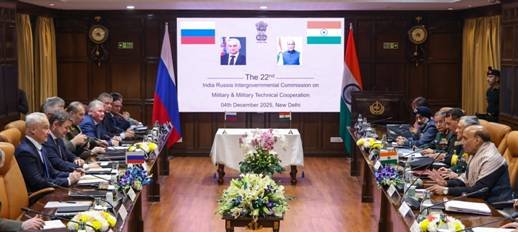PM says work on 10 semiconductor projects in progress
India’s 7.8 percent GDP growth is from across all sectors — manufacturing, services, agriculture, and construction — with enthusiasm evident everywhere, Prime Minister Narendra Modi has told semiconductor industry CEOs and their associates from India and abroad at the inauguration of ‘Semicon India – 2025’ on 2 Sept in New Delhi.
He noted that India’s rapid growth is infusing new energy across industries and among every citizen, affirming that this trajectory of growth is propelling India swiftly towards becoming the third largest economy in the world https://www.bseindia.com/.
Modi highlighted that the global semiconductor market has already reached US$600 billion, and in the coming years, it is expected to surpass US$1 trillion https://www.nseindia.com/.
He expressed confidence that, given the pace at which India is advancing in the semiconductor sector, India will hold a significant share in this US$1 trillion market.
Stating that he wished to highlight the speed at which India is progressing, he stated that in total, 10 semiconductor projects are now underway, involving an investment of over US$18 billion — more than Rs.1.5 lakh crore. “This reflects the growing global trust in India,” he underlined https://www.meity.gov.in/.
He recalled the Semicon India programme since its launch in 2021. In 2023, India’s first semiconductor plant had been approved, in 2024, several more plants received approval and in 2025, five additional projects were cleared.
Emphasising that in the semiconductor sector, speed matters, Modi said, “the shorter the time from file to factory, and the lesser the paperwork, the sooner wafer work can begin.” He stressed that the government is working with this very approach http://commerce.gov.in.
The National Single Window System has been implemented, enabling all approvals from both the Centre and States to be accessed on a single platform. As a result, investors have been freed from extensive paperwork, he further added.
The Prime Minister highlighted that semiconductor parks are being developed across the country under a plug-and-play infrastructure model, which offer facilities such as land, power supply, port and airport connectivity, and access to a skilled worker pool.
He remarked that when such infrastructure is combined with incentives, industrial growth is inevitable. Whether through Production Linked Incentives (PLIs) or Design Linked Grants, India is offering end-to-end capabilities. “This is why investment continues to flow in,” he emphasised.
Affirming that India is moving beyond backend operations and progressing towards becoming a full-stack semiconductor nation, Modi reiterated that the day is not far when India’s smallest chip will drive the world’s biggest change https://www.makeinindia.com/home/.
He stated, “Our journey began late… but nothing can stop us now.”
The Prime Minister informed that CG Power’s pilot plant commenced operations on August 28, just 4–5 days ago. He added that the pilot plant of Kaynes is also about to begin. Test chips from Micron and Tata are already in production. He reiterated that commercial chip production will begin this year, underscoring the rapid progress India is making in the semiconductor sector.
Emphasizing that India’s semiconductor success story is not confined to a single vertical or a single technology, Modi stated that India is building a comprehensive ecosystem — one that encompasses designing, manufacturing, packaging, and high-tech devices, all within the country https://sbi.com.in/.
He clarified that the Semiconductor Mission is not limited to establishing a single fab or producing a single chip. Rather, India is creating a robust semiconductor ecosystem that will make the nation self-reliant and globally competitive, the Prime Minister underscored.
Underlining another key feature of India’s semiconductor mission, Modi said that the country is advancing in this sector alongside the world’s most advanced technologies while design centres being developed in Noida and Bengaluru are working on some of the world’s most advanced chips—capable of storing billions of transistors.
He emphasized that these chips will power the immersive technologies of the 21st century.
Noting the challenges faced by the global semiconductor sector, the Prime Minister affirmed that India is actively working to overcome them.
He informed global CEOs that India is currently working on the National Critical Mineral Mission and is committed to meeting its demand for rare minerals domestically. He added that over the past four years, significant progress has been made on critical minerals projects.
“India has reached this stage by following the mantra of Reform, Perform, and Transform. A new phase of next-generation reforms will soon be initiated,” stated the Prime Minister, affirming that work is underway on the next phase of the India Semiconductor Mission.
Addressing all investors present, he expressed India’s readiness to welcome them with an open heart and said, “Design is ready. Mask is aligned. Now is the time for precision execution and delivery at scale.”
He emphasized that India’s policies are not short-term signals but long-term commitments and assured that every investor’s needs will be met.
Semicon India – 2025 is a three-day Conference held from 2nd to 4th September, It also included 6 countries Round Table discussions, country pavilions and dedicated pavilions for Workforce Development & Start-Ups among others. Fiinews.com










